- Joined
- Jul 6, 2016
- Messages
- 102
I have this ancient three jaw scroll Chuck with no real markings on it. I tried to use it and the run out was absolutely terrible it was actually visible. It measured on the order of 7 thousands.
It came with it lathe parts that I purchased and I didn't really inspect it before I threaded it on my Logan 820. It's the only three jaw Chuck that I have it's a bummer that I can't use it. When I inspected the threads I couldn't believe my eyes they are completely trashed rotted out. It seems that there was also a couple of voids in the casting of the back plate that rusted through in the thread area. It's honestly that bad.
The truck itself does not have a lot of wear on it. The Jaws not shown here it have no where that is visible. The flat is nice and square etcetera. No cupping nothing. When cleaned up the jobs slide nice and smooth and still tight. So I think this thing might have sat on a Shelf for a long time because of the manufacturing defect in the back plate nobody got around to fixing.
For ****s and giggles I would like to see if anyone can identify it as there are no markings on it other than it says made in Germany I think. It has a serial number. And an inspection number of 315. At least I think that that is an inspection number there's a German word that I have not translated yet that looks like its controller perhaps? At any rate here are all the pictures it'd be interesting to see if anyone knows what it is I have not found any images on Google that look like this.
This measures 7.5 inches, does that men it's a 7 or 8 inch chuck?
I honestly need a 3 jaw scroll Chuck for quick work. Indicating every single thing that I turn is really bumming me out. There are times where high accuracy is not that critical it would be nice not to have to indicate everything.
I could just buy a new 3 jaw Chuck but it be a lot cheaper to fix this one with the new back plate I reckon. I don't know if I trust my skill yet to make the back plate myself. I mean I could make it without threading but threading on a lathe is something that I have not mastered yet completely I have all the tools just not the experience.
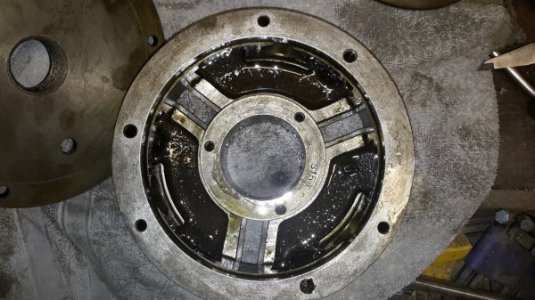
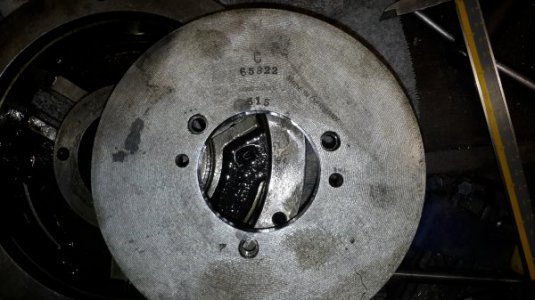


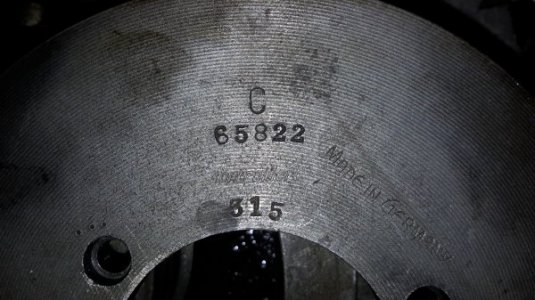
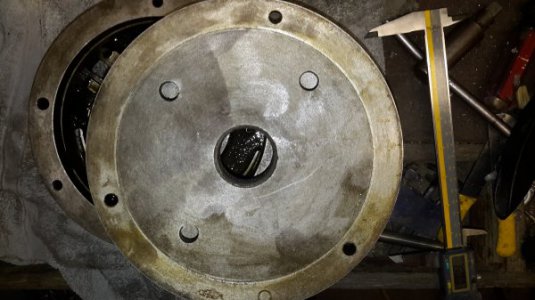
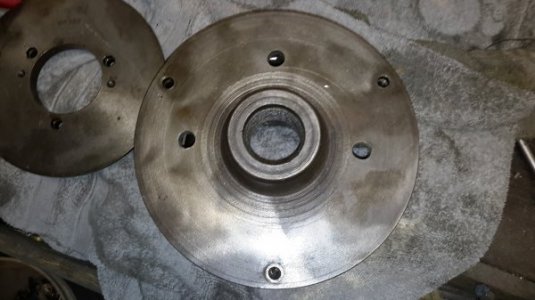
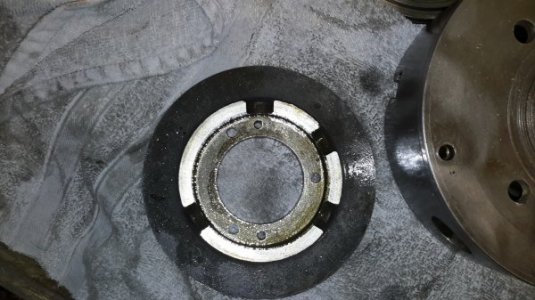
It came with it lathe parts that I purchased and I didn't really inspect it before I threaded it on my Logan 820. It's the only three jaw Chuck that I have it's a bummer that I can't use it. When I inspected the threads I couldn't believe my eyes they are completely trashed rotted out. It seems that there was also a couple of voids in the casting of the back plate that rusted through in the thread area. It's honestly that bad.
The truck itself does not have a lot of wear on it. The Jaws not shown here it have no where that is visible. The flat is nice and square etcetera. No cupping nothing. When cleaned up the jobs slide nice and smooth and still tight. So I think this thing might have sat on a Shelf for a long time because of the manufacturing defect in the back plate nobody got around to fixing.
For ****s and giggles I would like to see if anyone can identify it as there are no markings on it other than it says made in Germany I think. It has a serial number. And an inspection number of 315. At least I think that that is an inspection number there's a German word that I have not translated yet that looks like its controller perhaps? At any rate here are all the pictures it'd be interesting to see if anyone knows what it is I have not found any images on Google that look like this.
This measures 7.5 inches, does that men it's a 7 or 8 inch chuck?
I honestly need a 3 jaw scroll Chuck for quick work. Indicating every single thing that I turn is really bumming me out. There are times where high accuracy is not that critical it would be nice not to have to indicate everything.
I could just buy a new 3 jaw Chuck but it be a lot cheaper to fix this one with the new back plate I reckon. I don't know if I trust my skill yet to make the back plate myself. I mean I could make it without threading but threading on a lathe is something that I have not mastered yet completely I have all the tools just not the experience.








